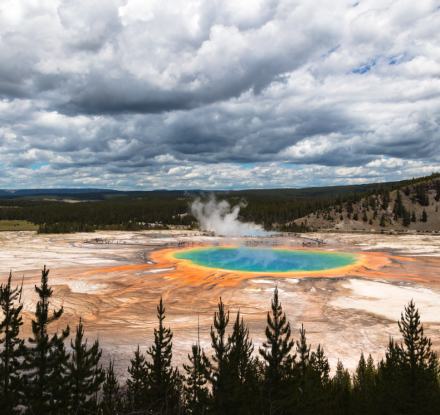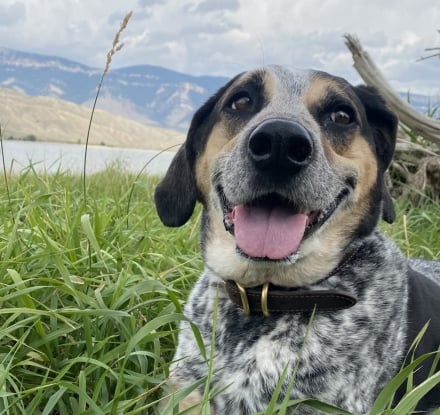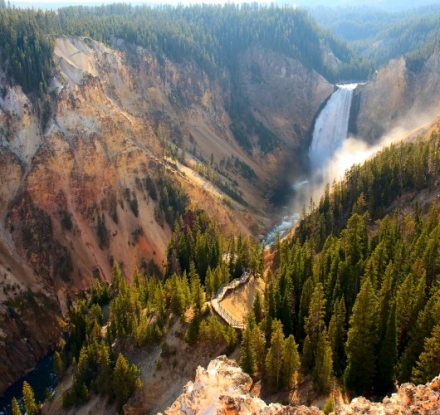
The Bear Necessities
While people in various parts of the country are celebrating kids returning to school and football season getting underway, I am eagerly anticipating my own Wyoming tradition.
Watching bears getting ready to hibernate.
During the fall, bears and nuts go together like gardeners and zucchini. It is the time to gorge, and you can never have too much. One significant difference: gardeners are likely to share their zucchini, but I wouldn’t recommend asking bears to share their nuts. Unless you’re nuts.
Grizzlies and black bears in Yellowstone Country are busy gathering and gorging on the abundant berries and pine nuts in the region’s dense forests to fatten up before spending the winter months in a quasi-dream state in their cozy dens while living off the fat they built up during the summer and fall months. Doesn’t that sound heavenly? This stage where they eat everything in sight is called hyperphagia, and bears can gain up to four pounds in a single day. For some perspective, just think of a teenage boy going through a growth spurt.
Getting ready to den takes planning and preparation, and much like the human species, some bears begin working on their winter homes months in advance, while others wait until the very last minute. Again, think of a teenager waiting until the night before a report is due. Occasionally, they find a pre-owned den, perhaps adding their own personal touch with bedding material like spruce boughs to make their winter slumber more comfy.
Choosing a site is a combination of personal preference, opportunity, instinct and other factors. Expectant females like to den at higher elevations than other females and male bears.
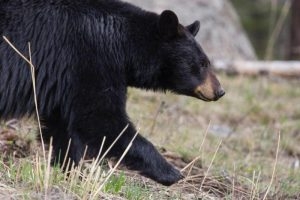
Bears are found throughout the region with Lamar Valley a prime viewing spot.
The openings to the dens are typically just large enough for the bear to squeeze through, and there is not very much extra space. This factor helps to contain body heat throughout the winter.
The timing for hibernation can vary, but it usually occurs from late October to mid-November. Contrary to what many people believe, the bears do not hibernate because they cannot handle the cold. It’s because their food sources dry up in winter. I’ve seen plenty of bears in captivity frolicking in the snow since their handlers deliver meals daily.
What I find most fascinating is that bears are born during hibernation, usually in late January/early February. The cubs are born blind and helpless and are only around eight inches long weighing eight to 12 ounces. The mother continues hibernating while the cubs spend some three months nursing, sleeping and growing. These mamas have it pretty good compared to humans, if you ask me.
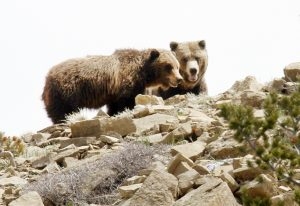
Grizzly bears feature distinct humps on their backs.
As we enter this fun time of the year, be extra vigilant. The National Park Service has published some guidelines, and I am a stickler for following NPS rules. Here is a little reminder:
- Bears are dangerous. More information can be found on this bear safety page.
- Visitors are required to keep all food and garbage stored in a bear-proof manner.
- When viewing bears along roads, use pullouts and stay in your car.
- If you have a surprise encounter with a bear, do not run. Slowly back away.
- Carry bear spray and know how to use it.
- If you are injured by a bear (regardless of how minor), or if you observe bear or bear sign, report it to a park ranger as soon as possible. Someone’s safety may depend on it.
So, let’s be careful out there and enjoy the show. Maybe it can even make it into a teenager’s last-minute presentation.
Until next week, I am lovin’ life – and an extra helping of zucchini and pine nuts – in Cody, Wyo.


